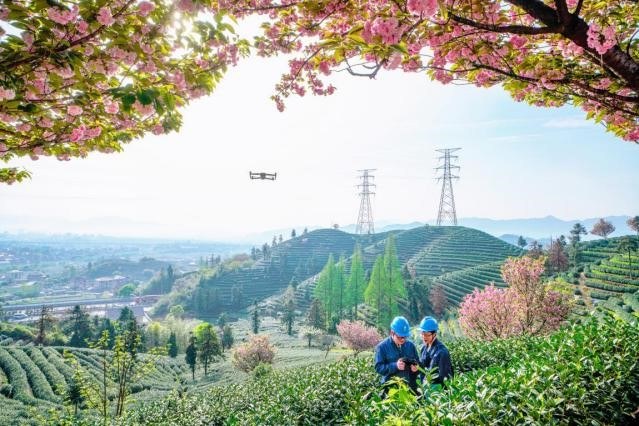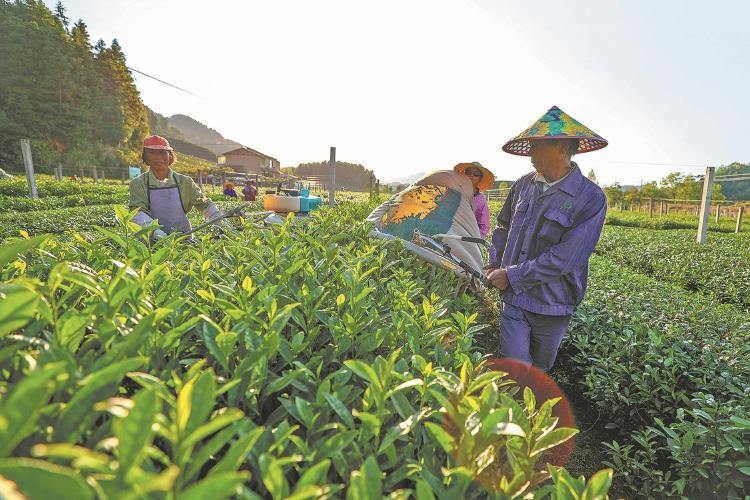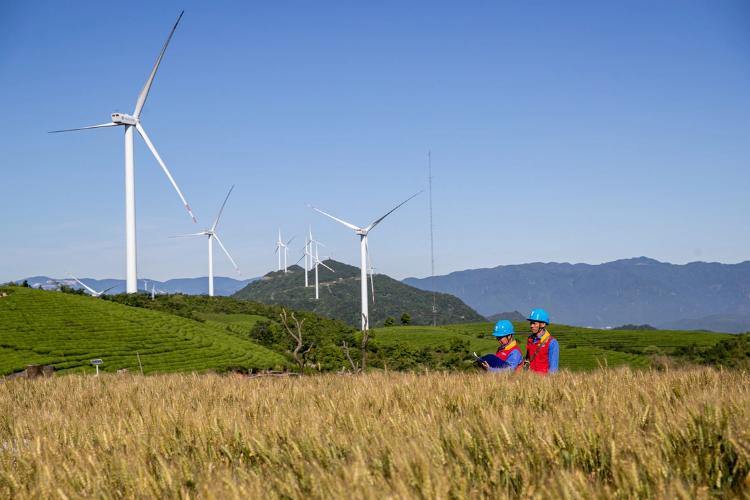On July 20, 2022, the National Digital Village Construction Site Promotion Conference was held in Deqing, Zhejiang. As the pioneer of the digital economy, Zhejiang has once again demonstrated to the whole country the vigorous power of digital reform to drive rural revitalization and the common prosperity of farmers and rural areas. Looking back on the past, Zhejiang's digital village construction has always been vigorous and firm.
In 2005, innovatively launched the "Million Farmers Mailbox Project";
In 2007, implemented the "10,000 Villages Networking Project";
In 2019, initiated the pilot creation of provincial digital villages;
In 2021, comprehensively promoted the digital reform of agriculture and rural areas...
The latest evaluation report of the Ministry of Agriculture and Rural Affairs shows that the overall development level of digital agriculture and rural areas in Zhejiang county has reached 66.7%, ranking first in China for three consecutive years.
In Zhejiang, the digital reform of agriculture and rural areas is being carried out efficiently, and a new picture of the digital village under the big scenario of common prosperity is being drawn quickly.
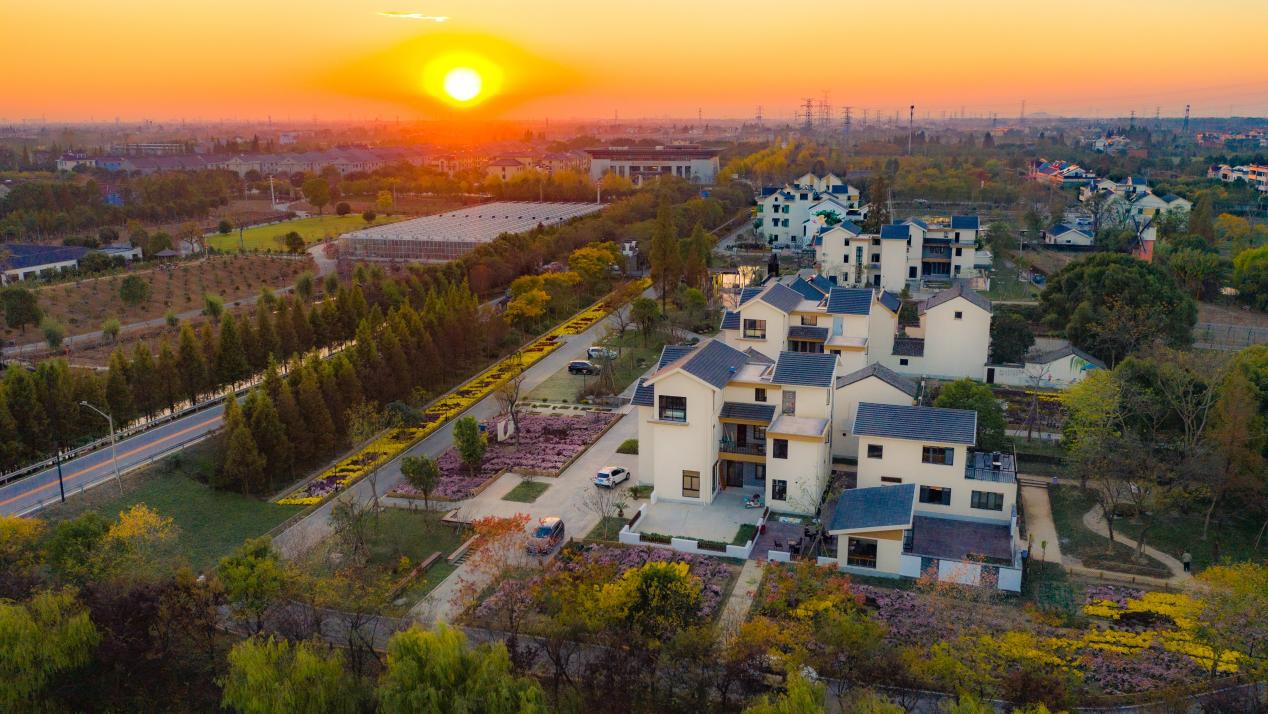
Rural scenery in Zhejiang. (Photo/ Zhe Nong Hao)
Digital Reform: Modern Agriculture Improves Quality and Efficiency
"Three people raise 10,000 pigs!" In Haiyan, Jiaxing, Qinglian Future Ranch is a bright spot.
As one of the first batch of future farms in the province, Qinglian Future Ranch relies on the application of "Zhenongmu", starting from breeding, slaughtering, logistics, sales, service and other links, embeds digital reform concepts and technologies, and reshapes the entire pig industry chain. Four digital sub-scenarios have been built here, including "Cloud Ranch", "Digital Intelligence Factory", "Direct Logistics" and "Quality User Service". Digital breeding, intelligent slaughtering, full life cycle traceability, and "Dr. Shan" digital stores have become the "standard facilities" of Qinglian's Future Ranch.

Digital System applicaitons. (Photo/ Zhe Nong Hao)
"Relying on the '1+4+N' digital whole industry chain model, the number of breeding workers per 100,000 pigs in the company's ranches has dropped from 250 to 35. The average fresh sales rate of the ranch has increased from 60% to 91%. The average profit margin has risen from 1% to 6%, and the benefits are beyond the reach of farming methods.” When it comes to the changes brought about by the digital reform to the pig industry, Xu Mingshu, chairman of Zhejiang Qinglian Food Co., Ltd., talks endlessly.
In addition, Qinglian Future Ranch has also opened up the data sharing and collaborative linkage channel of "Zhejiang Animal Husbandry Industry Brain" and "Zhejiang Food Chain", which has greatly improved production efficiency."With the help of the big data platform, the delivery of 'orders placed on the same day, production on the same day, and delivery on the next day in the Yangtze River Delta region has been achieved. It has also achieved the benefit of 1 future ranch equal to 10 traditional farms." Xu Mingshu told reporters that with the data of the whole chain, the comprehensive turnover rate of enterprises has been shortened from 15 days to 7 days. This not only saves money, but also makes the dynamic prediction of the enterprise market 6 months ahead of schedule, the management is more accurate and scientific, and industrial development has reached a new level.

Application of smart agricultural products. (Photo/ Zhe Nong Hao)
In the Deqing Shuimu Moganshan urban agricultural complex, the combination of digital technology and vegetable planting is also eye-catching.
Every morning, Alpha, the head of the "Deqing Shuimu" agricultural complex, habitually opens the "Nongzhi Cloud" platform. Information about the base, plot management, crop growth and other information is clearly presented in front of his eyes. "For the first time, we have applied the industrial BIM model to agriculture, using cloud technology, big data and other technologies to build a digital vegetable production centre. The tomato picking period has been extended from 30 days to 365 days, breaking through the limitations of traditional agriculture relying on climate." Alpha said that at present, the thin-skinned, sandy, and large tomatoes and various leafy vegetables in the complex have been continuously produced throughout the year. It can supply 1 million kilograms of high-quality assured vegetables to the market every year, and the output has increased by 98% compared with the traditional planting mode, and the land output efficiency has reached a new high.

Agricultural robots (Photo/ Zhe Nong Hao)
Today, digital agricultural technology has been widely used in rural Zhejiang. In Quzhou's Qujiang District, the newly built Citrus Digital Integrated Service Center innovates the digital model of industry promotion for prosperity. At present, it has covered 50 large units and the citrus base covers an area of more than 10,000 mu (about 6.67 square kilometres). In Jiande, chicken and other advantageous industries are gradually promoting the development model of "industrial brain + future farm" to achieve precise control of key bases...
In recent years, Zhejiang has always adhered to the development direction of efficient ecological agriculture, vigorously promoted the "double-strength" action of agriculture, guided and supported the main body to carry out digital reform of farm infrastructure, mechanical equipment and industrial chain, and promoted the automation and intelligentization of production and operation processes. Strive to create a demonstration model that can be seen, learned, and replicated. At present, the province has built 210 digital agricultural factories and 10 future farms with higher standards.
Digital Applications Show Various Highlights
Cixi's agricultural modernization level has always been at the forefront of the province. Grape, vegetable and other industries have a relatively high level of development, and there are many farmers engaged. There are more than 10,000 grape growers with a single unit size of more than 10 mu (about 6,600 square meters). With the advancement of the construction of the whole production chain, growers have an increasing demand for refrigerated and fresh-keeping facilities for the origin of agricultural products, but the city's public cold storage can only meet a quarter of the needs of fruit and vegetable growers, while the self-use cold storage of large planters still exists seasonal vacancies.
Since last year, the launch of an application called "Shared Cold Storage" has been praised by local growers. "Now growers only need to open the 'Shared Cold Storage' application and use the 'Map to find a warehouse' to find nearby cold storage with remaining storage capacity. This will help growers to achieve off-peak and even cross-season sales." Hu Weihong, a member of the Party Committee of Cixi Agriculture and Rural Bureau, told reporters that since last year, Cixi City has launched 136 "Shared Cold Storages" with a shared storage capacity of 410,000 cubic meters, and more than 20,000 growers have enjoyed the benefits of "shared cold storages". The comprehensive utilization rate of cold storage in the city has increased by more than 15% on average. This digital application experience has been affirmed by the Ministry of Agriculture and Rural Affairs and has been promoted throughout the province.
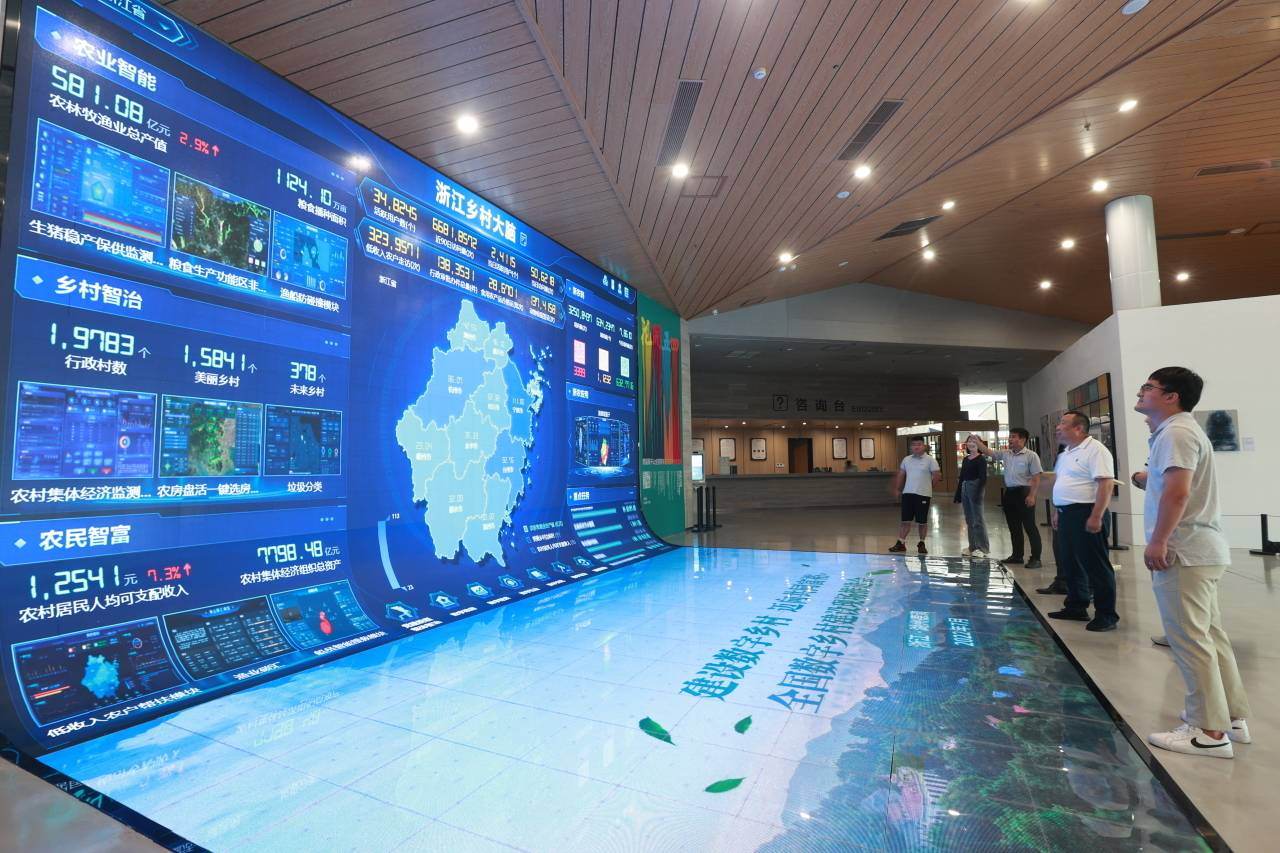
Digital System applications (Photo/ Zhe Nong Hao)
Since 2021, the agricultural and rural system of our province has focused on the three major tracks high-quality and efficient agriculture, livable and suitable for rural villages, and farmers' prosperity. Actively build the agricultural and rural digital reform framework system of "Zhejiang Rural Brain + Zhejiang Agriculture Series Applications", and the construction of digital villages is progressing rapidly.
Nowadays, more and more practical and easy-to-use digital applications are registered in "Zheliban" and "Zhezhengding", and they have been implemented in the agricultural and rural fields through the mechanism of "innovation in one place and sharing in the whole province". The "Zhe Nong You Pin" application focuses on the whole life cycle service management of agricultural products from farm to table. It has opened up all links of core business such as fertilizer purchase, fixed application, quality and safety, one standard and one product, production and marketing connection, agricultural waste recycling, and dual-carbon accounts, to ensure the high-quality development of agriculture.
The characteristic industrial application of Lin'an pecan has solved the problems encountered in the industrial integration development of pecan, such as "where to plant, how to grow well, how to standardize processing, and how to sell well". The application of "Xiangshan Villagers Saying Things" integrates and integrates all aspects of village-level affairs decision-making, management, and supervision, and the democratic management of the village goes deeper. The application of "Yushengxin" in Jiaojiang, Taizhou, takes the whole process of intelligent control of fishing vessel pollutants as the entry point and carries out digital reform of fishery environmental protection, supply chain, financing, logistics, etc., to achieve the unity of ecological environmental protection, high-quality development and common prosperity.
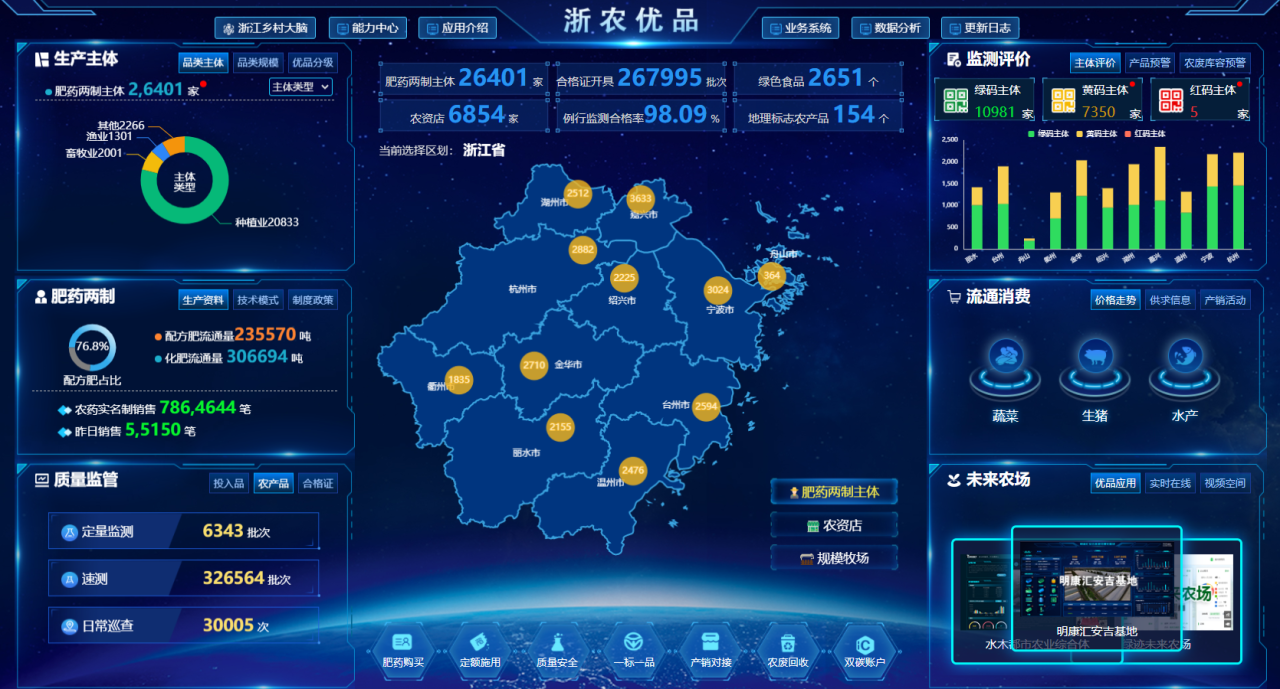
Digital application interface (Photo/ Zhe Nong Hao)
At present, the "Zhejiang Rural Brain", which is the digital and intelligent competence centre in the agricultural and rural fields, continues to iterate to improve the system structure and accelerate the improvement of functions. It has collected more than 1.6 billion pieces of various "Sannong" data, constructed 91 "Sannong" geographic information layers, has nearly 280,000 registered users and has more than 600,000 daily visits. "Zhenong Code" has been used more than 37 million times, and the three major capabilities of agricultural intelligence, rural smart governance, and farmers' smart wealth creation have been initially completed, and agriculture and rural areas have gone from "slow change" to "acceleration".
Smart Governance: Digital Villages Are Suitable for Living And Working
Shufeng Village is located in the north of Shimen Town, Tongxiang City. As soon as you enter the village, you can see the scattered houses and the cartoons of Feng Zikai, which are very elegant. As early as 15 years ago, it was an economically weak village in Tongxiang City, but now it has become the first batch of future villages in the province. The change from "poor students" to "model students" also depends on the help of digital reform.
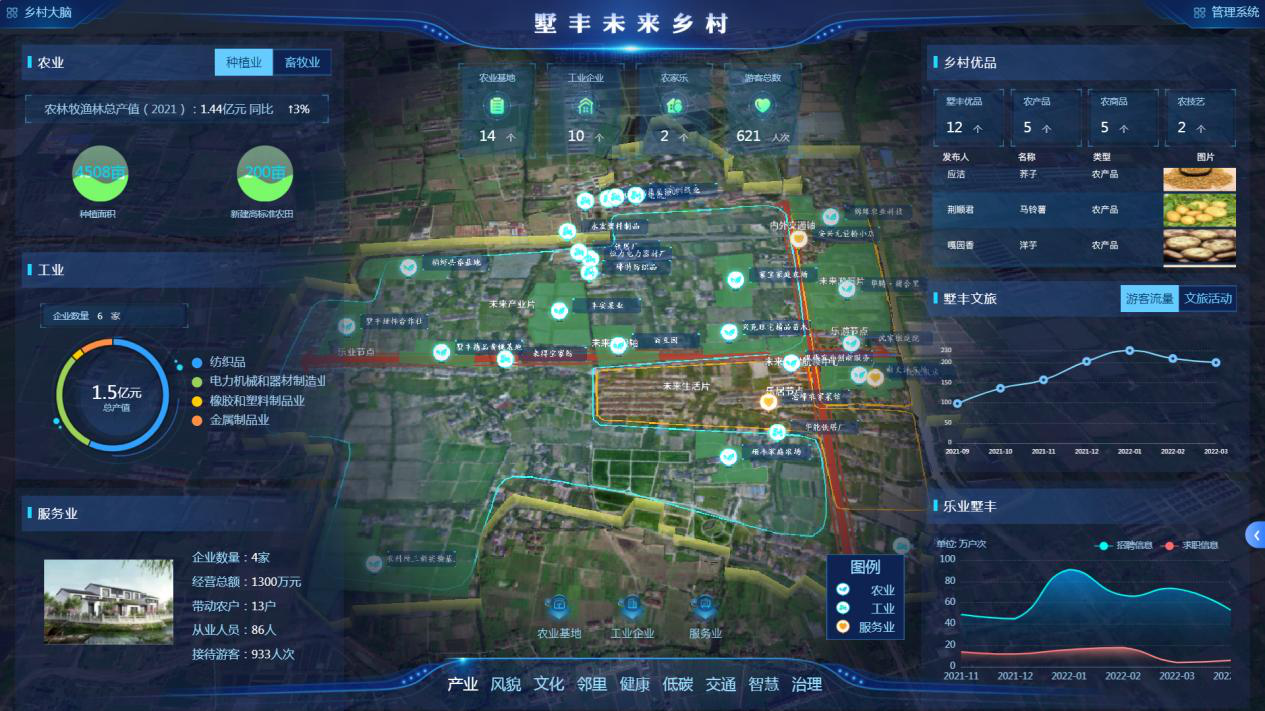
Shufeng digital application interface (Photo/ Zhe Nong Hao)
"Shufeng Village has upgraded the 'One Map Perception Shufeng' digital village system to a 'Cloud Village' comprehensive application. It integrates all digital information into the future village system to create a more practical version 2.0. Rural 'Sanzi', land transfer, mutual assistance and promotion of farmers can all be perceived on one screen and solved online. " Gu Chunmei, the relevant person in charge of the Tongxiang Agricultural and Rural Bureau, told reporters that considering the living needs of the villagers, the village has also created digital scenarios such as unmanned supermarkets, smart parking, and online hospitals, so as to realize the efficient integration of online applications and offline scenarios. Let the villagers better integrate into the "digital and intelligent life". At present, Shufeng Village has completed the construction of digital archives for 883 households with 3,665 people, with 3,029 registered users and over 20,000 logins on the platform.
The flow of data keeps people from running away. In recent years, Zhejiang has continued to increase the construction of rural information infrastructure and accelerated the introduction of rural broadband and 5G base stations into villages and households. A large number of projects have settled in the villages, such as pilot projects of new infrastructure for "agriculture, rural areas and farmers", rural revitalization industry development and integrated innovation demonstration construction. Zhejiang is the first province in China to achieve high-quality coverage of 5G networks in towns and villages, and basic coverage of 5G networks in administrative villages. The gap between urban and rural digital infrastructure is constantly narrowing.
With the continuous promotion of digital village construction, many local application scenarios have been created around rural production, life, and ecology. Improve the quality of life of farmers by providing smarter and warmer digital services. The deep integration of digital technology and rural areas has continuously spawned new products, new models, and new business formats, which have become a powerful driving force for promoting rural modernization.

Diverse digital applications. (Photo/ Zhe Nong Hao)
"Through the establishment of 'Agricultural Expo Online' and other platforms, our province has launched the 'Internet+' agricultural product flow project in 20 counties. In the face of problems such as unsalable agricultural products under the epidemic, 24,000 agricultural-related online stores have been transformed into digital marketing methods.
A crisis becomes an opportunity. In 2021, the province's online retail sales of agricultural products will reach 123.89 billion yuan, ranking first in the country in terms of online retail sales. "The relevant person in charge of the digital "three rural" special class of the Provincial Department of Agriculture and Rural Affairs told reporters that with the transformation of the province's digital rural construction from "partial construction" to "full development", the foundation of rural construction is getting stronger and stronger.
In terms of rural governance, Zhejiang, guided by digital reform, has further promoted the construction of "four platforms" for integrated basic-level governance. A number of new digital rural governance models such as "Xiangcunding" and "Village Talking" have been popularized and applied. "Zheyoushanyu", "Zhelikangyang" and other "Zheli" series of applications have been effectively implemented in rural areas, and the construction of a new rural governance system of "four governance integration" has achieved gratifying results. The province's rural party affairs, government affairs, and finances are all made public, the "Xueliang Project" covers all administrative villages, and the digital level of village collective "three capitals" management has reached a new level.
Zhejiang's digital village construction is focusing on the big scene of common prosperity and digital reform and making continuous progress. Zhejiang continues to explore a new path to digitally strengthen villages and enrich the people, providing a strong driving force for promoting the simultaneous realization of modernization in agriculture and rural areas, and the simultaneous realization of common prosperity in rural areas.
Translator: Tan Qikuan

